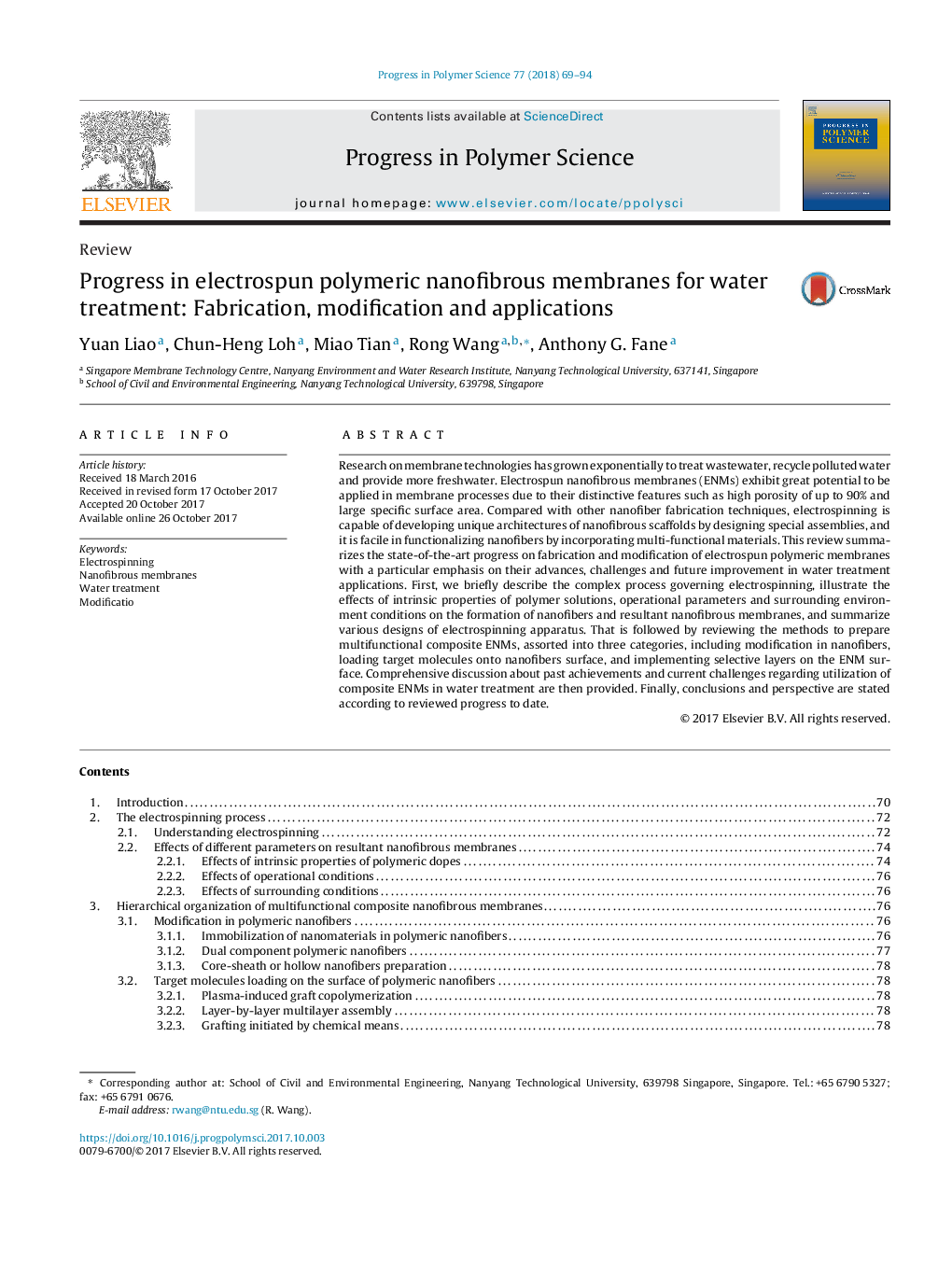| Article ID | Journal | Published Year | Pages | File Type |
|---|---|---|---|---|
| 7825925 | Progress in Polymer Science | 2018 | 26 Pages |
Abstract
Research on membrane technologies has grown exponentially to treat wastewater, recycle polluted water and provide more freshwater. Electrospun nanofibrous membranes (ENMs) exhibit great potential to be applied in membrane processes due to their distinctive features such as high porosity of up to 90% and large specific surface area. Compared with other nanofiber fabrication techniques, electrospinning is capable of developing unique architectures of nanofibrous scaffolds by designing special assemblies, and it is facile in functionalizing nanofibers by incorporating multi-functional materials. This review summarizes the state-of-the-art progress on fabrication and modification of electrospun polymeric membranes with a particular emphasis on their advances, challenges and future improvement in water treatment applications. First, we briefly describe the complex process governing electrospinning, illustrate the effects of intrinsic properties of polymer solutions, operational parameters and surrounding environment conditions on the formation of nanofibers and resultant nanofibrous membranes, and summarize various designs of electrospinning apparatus. That is followed by reviewing the methods to prepare multifunctional composite ENMs, assorted into three categories, including modification in nanofibers, loading target molecules onto nanofibers surface, and implementing selective layers on the ENM surface. Comprehensive discussion about past achievements and current challenges regarding utilization of composite ENMs in water treatment are then provided. Finally, conclusions and perspective are stated according to reviewed progress to date.
Related Topics
Physical Sciences and Engineering
Chemistry
Organic Chemistry
Authors
Yuan Liao, Chun-Heng Loh, Miao Tian, Rong Wang, Anthony G. Fane,
